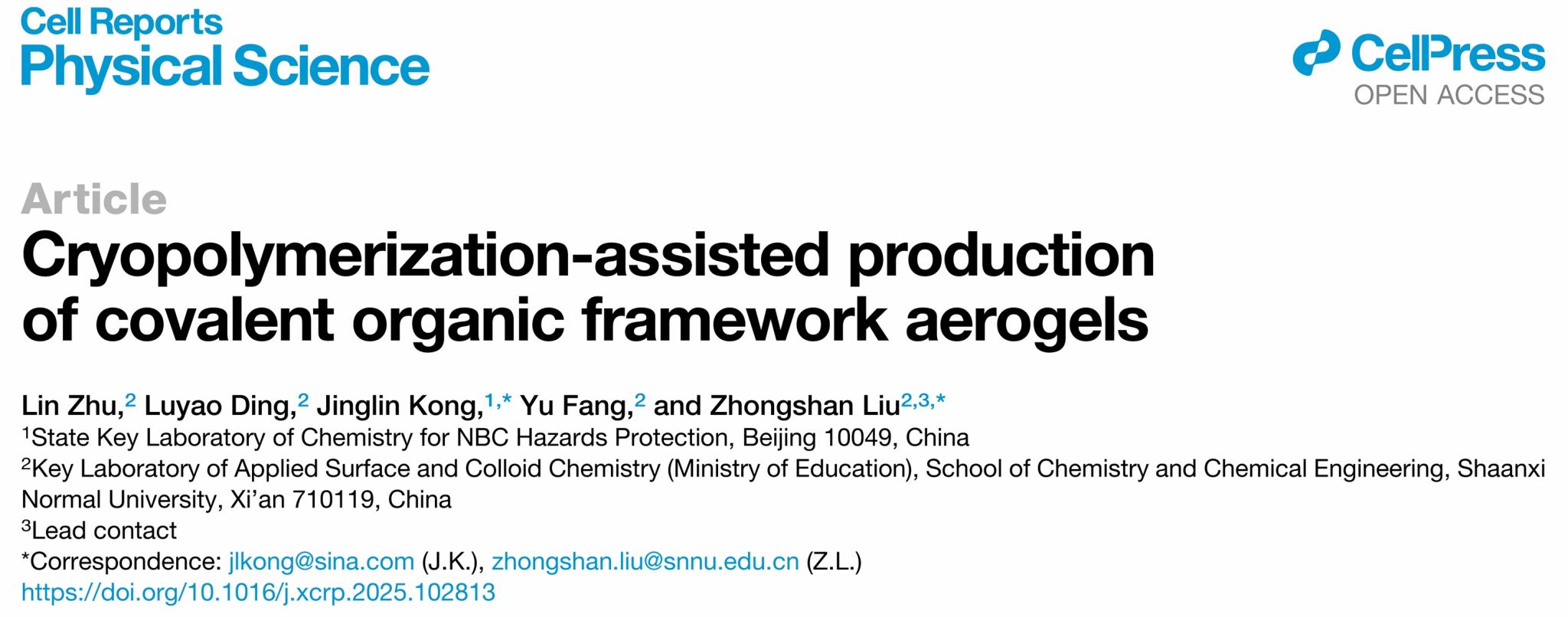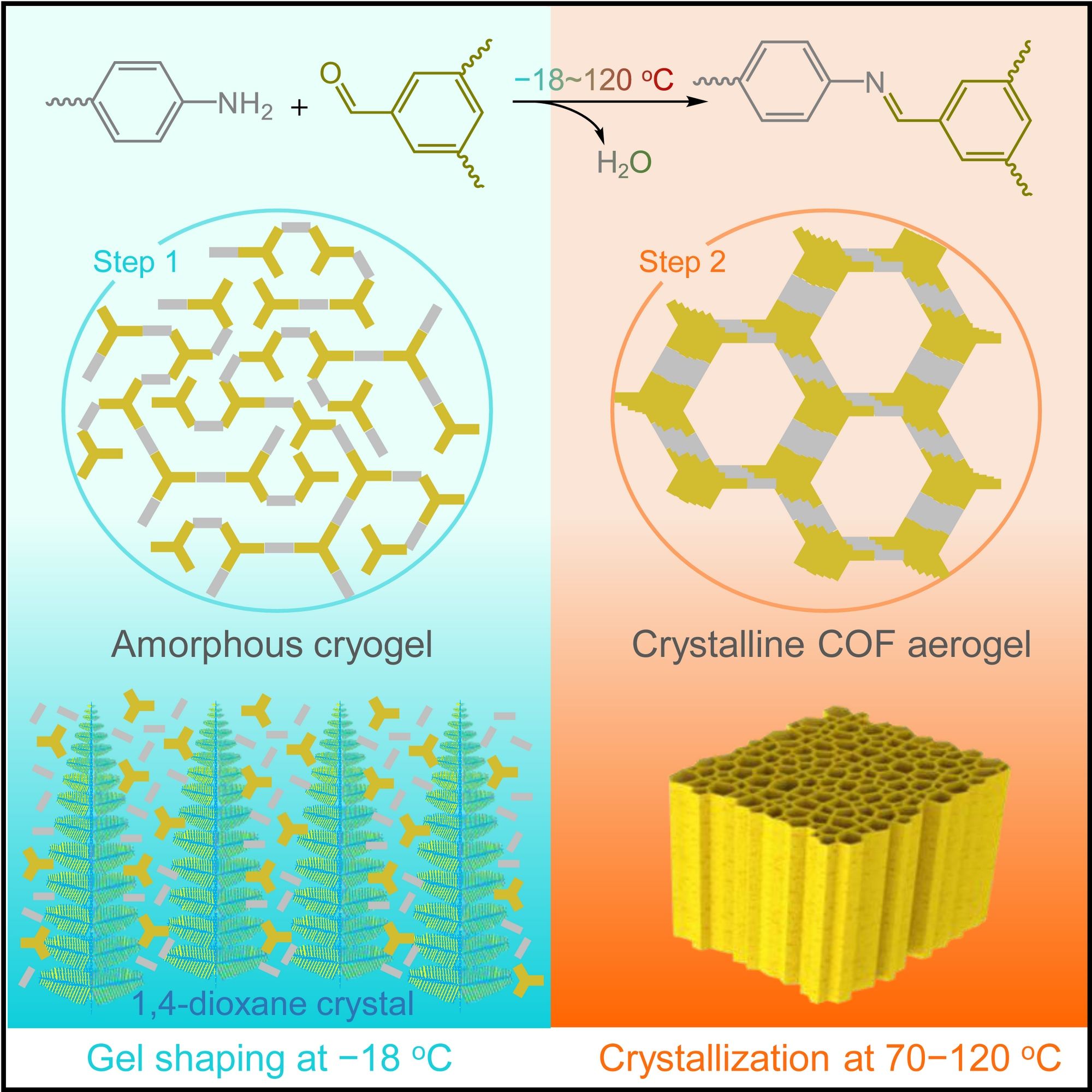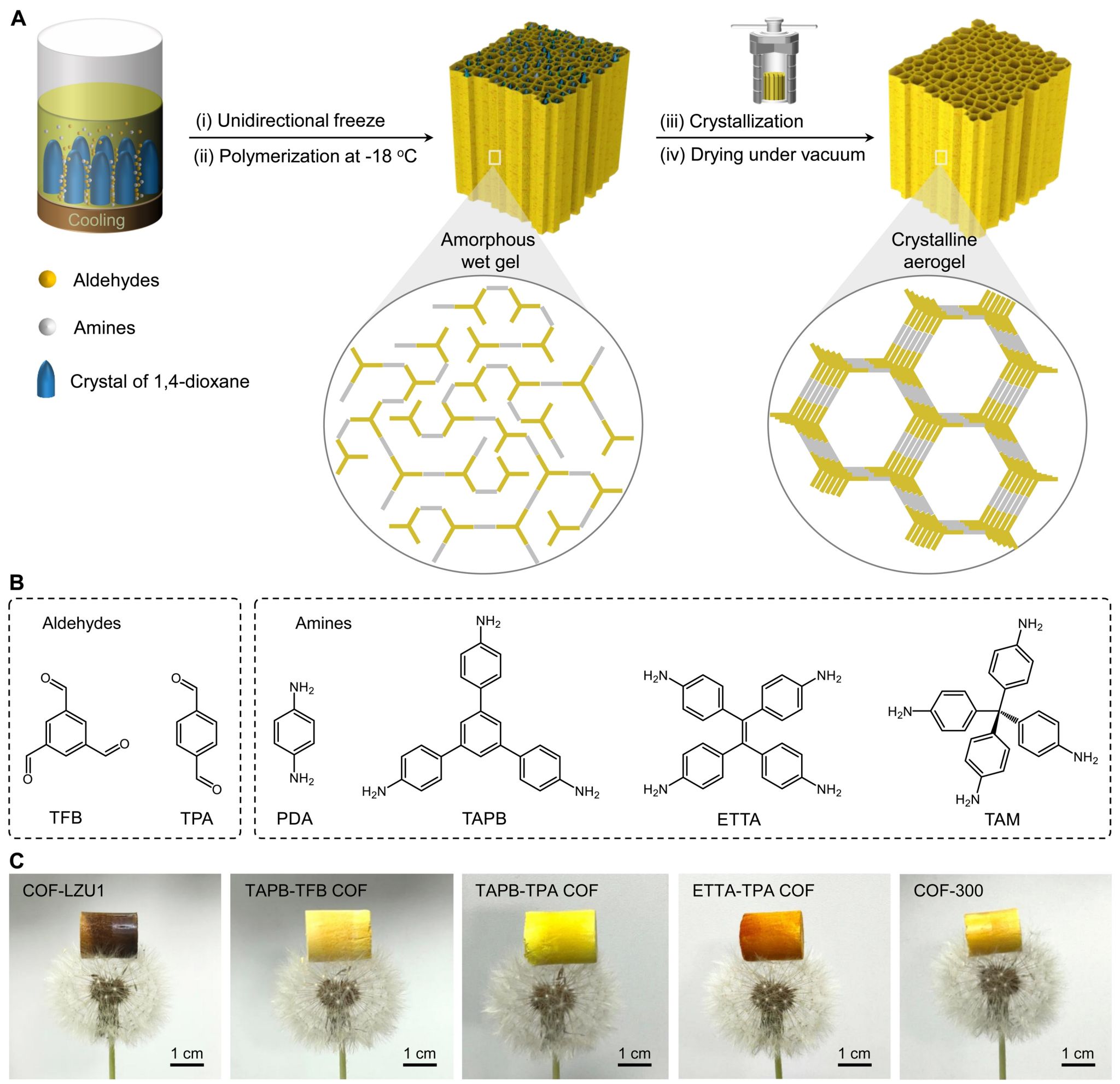
Lin Zhu, Luyao Ding, Jinglin Kong*, Yu Fang, and Zhongshan Liu*. Cell Rep. Phys. Sci. 2025, 6, 102813. DOI: 10.1016/j.xcrp.2025.102813

The shaping of covalent organic frameworks into aerogels have attracted attention recently, tackling problems of their poor processability. But how to modulate through-porous structure and produce COF aerogels with high mechanical stability is an ongoing challenge.
The aldehyde-amine polymerization reaction has been performed at room temperature up to 120 oC to synthesize imine-linked COFs. Indeed, this reaction can proceed at subzero temperatures. Inspired by this finding and leveraging the freezing casting technique, we for the first time built a cryopolymerization-assisted production (CryoPAP) method for COF aerogels. The as-synthesized COF aerogels possess aligned macroporous structures, and show an enhanced mechanical strength.
The CryoPAP method follows a two-step process, realizing the shaping and crystallization separately. Briefly, a homogenous mixture of monomers and 1,4-dioxane (5:95, in weight, containing 0.1 M acetic acid) is frozen using a unidirectional freezing technique. Monomers confined between 1,4-dixoane crystals, which serve as a template, polymerize to form a cryogel. Then, the cryogel is immersed in a mixture for amorphous-to-crystalline transformation. After washing and drying under vacuum, a COF aerogel is obtained. One significant benefit of the CryoPAP method is its simple drying under vacuum, avoiding the use of supercritical carbon dioxide drying or freeze-drying instruments.

Figure 1. Schematic illustration for cryopolymerization-assisted production of COF aerogels
First Author: Zhu Lin, Research Assistant at Shaanxi Normal University
Correspondence Authors: Assoc. Prof. Liu Zhongshan, Shaanxi Normal University; Prof. Kong Jinglin, State Key Laboratory of Chemistry for NBC Hazards Protection
Full Text Link: https://doi.org/10.1016/j.xcrp.2025.102813